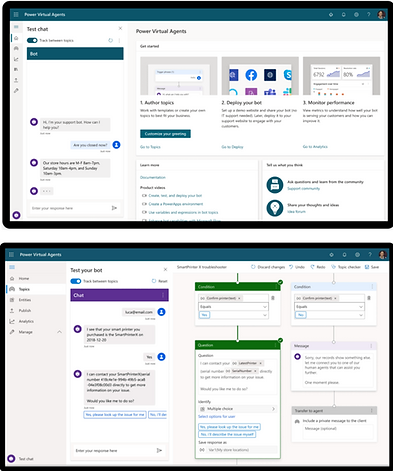Microsoft Power Platform
Power Platform consists of four applications, or components:
Power BI:
Microsoft Power BI is a cloud-based business analytics solution designed to help organizations “turn unrelated sources of data into coherent, visually immersive, and interactive insights.” With Power BI, users can pull data from multiple sources — for example, an Excel spreadsheet and a database — and use it to create easy-to-understand data visualizations that provide a 360-degree view into business operations.


PowerApps:
Microsoft PowerApps is a program that leverages the low-code technique to democratize software development. Rather than manually program line after line of code, PowerApps users can quickly design and develop apps by dragging and dropping components into a flowchart-style formation. PowerApps users have their choice of two application types: canvas apps and model-driven apps.
Power Automate:
Originally known as Microsoft Flow, Power Automate brings design logic to applications created in PowerApps. Similar to PowerApps, Power Automate is designed to democratize automation through the power of Robotic Process Automation and enables users to build complex, automated business and process workflows, which are triggered by insights from Power BI.


Power Virtual Agents:
The newest addition to the Power Platform, Power Virtual Agents enables users to build their own virtual agents — that is, chatbots — using a guided, no-code graphical interface. Users can also integrate Power Virtual Agents into existing systems using prebuilt connectors or custom Power Automate workflows for a more connected experience.
Better Together
As an early adopter of Power Platform technologies, we offer tremendous insight in to how best to use Power Platform to meet your organisations needs. Our team will help you optimize the power of the platform to enhance your Dynamics implementation and other IP assets, and better control and secure your digital transformation.
